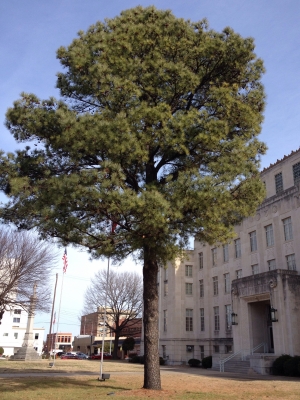
Moon trees are trees grown from 500 seeds taken into orbit around the Moon on the Apollo 14 mission in 1971. After the flight the seeds were sent to the southern Forest Service station in Gulfport, Mississippi, and to the western station in Placerville, California, with the intent to germinate them. Nearly all the seeds germinated successfully, and the Forest Service had some 420 seedlings after a few years. Some of these were planted alongside their Earth-bound counterparts, which were specifically set aside as controls. After over forty years there is no discernible difference between the two classes of trees. Most of the “Moon trees” were given away in 1975 and 1976 to many state forestry organizations, in order to be planted as part of the nation’s bicentennial celebration. Since the trees were all of southern or western species, not all states received trees. A Loblolly Pine was planted at the White House, and trees were planted in Brazil, Switzerland, and presented to Emperor Hirohito, among others.
Second-generation trees, grown from Moon Tree seeds, are sometimes known as Half-Moon Trees and are also growing around the world. One such Half-Moon Tree calls NASA’s Marshall Space Flight Center in Huntsville, Alabama, its home as it stands outside a building that played a key role in development of the Saturn V rocket that launched the Apollo 14 mission.
As NASA and its international, industrial, and academic partners prepare to return humans to the Moon as part of the Artemis program, understanding the effects of deep space on plant growth is critical – a foundation the Apollo 14 mission help lay. Astronauts on the Moon and Mars will be too far from Earth for regular resupply missions carrying fresh food, so they must be able to grow their own.
Picture Credit : Google



